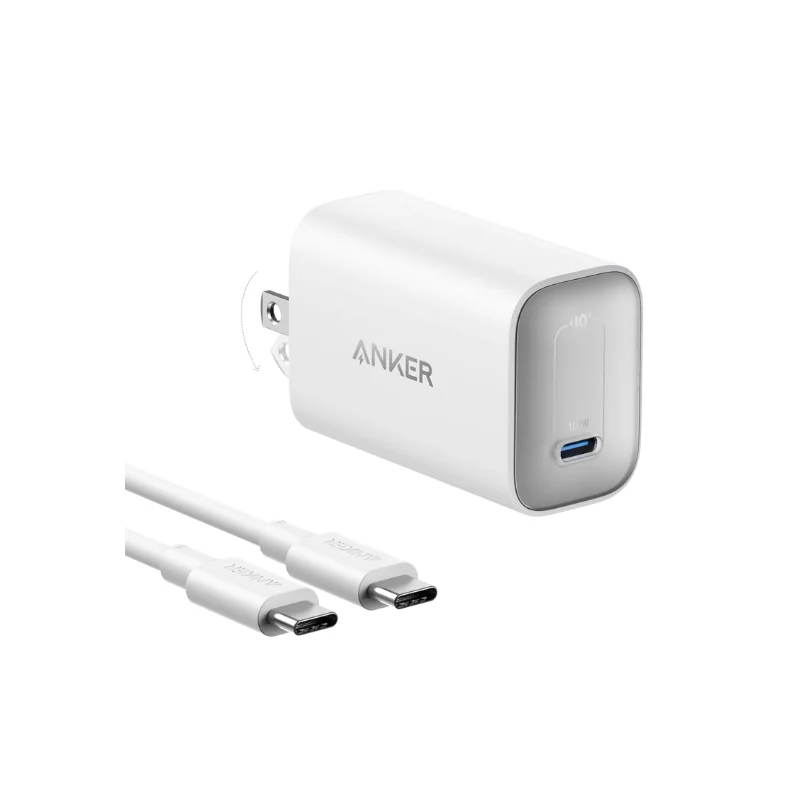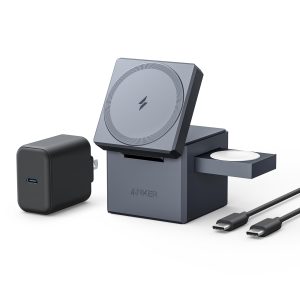Phone Charger: What It Is, How It Works, Applications, and Safe Usage

In today’s digital age, a phone charger is an essential device for keeping our smartphones powered up and ready for use. Whether you are at home, at work, or on the go, having a reliable phone charger is crucial to ensure your phone is always charged and functioning. In this article, we will explore what a phone charger is, how it works, its applications, and important safety tips for using it properly.
1. What Is a Phone Charger? (Introduction, Common Types, and Uses)
A phone charger is a device used to transfer electrical energy to a mobile phone, allowing it to recharge its battery. Phone chargers come in various shapes, sizes, and designs, but their main function remains the same – to provide power to the phone’s battery so it can operate.
Common Types of Phone Chargers:
- Wired Chargers (Cable Chargers): These are the traditional and most widely used phone chargers. They connect to the phone via a USB cable, typically with either a USB-A or USB-C connector. The other end plugs into a wall adapter or a power source.
- Wireless Chargers: These chargers use electromagnetic induction to transfer energy to the phone without the need for physical cables. Simply place the phone on the charging pad, and the phone charges wirelessly.
- Fast Chargers: These chargers provide higher power output, enabling devices to charge much faster than traditional chargers. They are typically used with newer phones that support fast charging technology, such as Qualcomm Quick Charge or USB Power Delivery (PD).
- Car Chargers: These chargers plug into a car’s 12V socket (usually the cigarette lighter) and provide a charging port for mobile devices while on the road.
- Portable Power Banks: These are portable battery packs that can charge your phone on the go without needing to plug into a wall outlet. Power banks are especially useful when traveling or when access to an outlet is limited.
Uses of Phone Chargers:
- Recharging Phones: The primary function of a phone charger is to recharge the smartphone’s battery, ensuring that the phone remains powered throughout the day.
- Charging Other Devices: Many phone chargers can also be used to charge other devices like tablets, smartwatches, wireless earphones, and more, depending on the type of connector and charging capabilities.
- Data Transfer: Some chargers, especially wired ones, allow you to transfer data between your phone and a computer while charging.
2. How Does a Phone Charger Work? (Principle of Operation and Key Components)
A phone charger works by transferring electrical energy from a power source (like a wall outlet or power bank) to the phone’s battery. The process can vary slightly depending on whether the charger is wired or wireless, but the basic principle is the same.
Key Components of a Phone Charger:
- Charger Adapter (Wall Plug or Power Bank): This is the main unit that plugs into a wall outlet or portable power bank. It converts the electrical current from the source to a suitable voltage for the phone’s battery.
- USB Cable: For wired chargers, the USB cable connects the adapter to the phone. The cable usually has a USB-A, USB-C, or Lightning connector, depending on the phone’s charging port.
- Charging Port on the Phone: This is the part of the phone where the charging cable is inserted. The charging port allows electrical current to flow from the charger into the phone’s battery.
- Wireless Charging Pad (for Wireless Chargers): In wireless charging, the pad contains an electromagnetic coil that generates an electromagnetic field. The phone must have a built-in receiver coil to capture the energy and convert it into charging power.
- Regulator Circuit: In both wired and wireless chargers, there is a circuit that ensures the correct amount of voltage and current is sent to the phone, protecting it from overcharging or overheating.
How It Works:
- Plug in the Charger: For a wired charger, plug the adapter into a power source and connect the USB cable to the phone. For a wireless charger, place the phone directly on the charging pad.
- Electrical Energy Transfer: For wired charging, electricity flows through the USB cable to the phone’s battery. In wireless charging, the electromagnetic field from the charging pad is captured by the receiver coil in the phone.
- Battery Charging: The phone’s internal charging circuit regulates the flow of electricity, ensuring that the battery receives the appropriate charge to fill it up to capacity.
- End of Charging: Once the battery is fully charged, the phone will typically alert the user with a notification, or the charger will stop delivering power (in the case of smart charging adapters).
3. Where Are Phone Chargers Used? (Practical Applications)
Phone chargers are versatile devices that are used in a variety of settings to ensure your phone stays powered throughout the day.
Common Applications of Phone Chargers:
- Home Use: Most commonly used at home to charge your phone overnight or during the day while you work or relax.
- On-the-Go Charging: Portable power banks or car chargers provide power when you are traveling or away from a wall outlet. They are great for long trips, flights, or camping.
- Workplaces: Many workplaces offer charging stations or allow employees to charge their phones at their desks. Some offices also have wireless charging stations for convenience.
- Public Places: Charging stations in public places like airports, cafes, and malls provide a place for people to recharge their phones while on the go.
- Travel: When traveling internationally, having the right phone charger (with the appropriate plug or voltage adapter) ensures that you can stay connected while exploring new places.
4. How to Use a Phone Charger Safely (Safety Guidelines and Important Tips)
While using a phone charger may seem simple, it is important to follow safety guidelines to avoid damaging your phone, charger, or even causing potential harm.
Safety Tips for Using a Phone Charger:
- Use the Right Charger: Always use a charger that is compatible with your phone model. Using the wrong charger can result in slow charging, overheating, or even damage to your phone.
- Avoid Overcharging: Most modern phones are designed to stop charging once the battery is full, but it’s still a good practice to unplug your phone once it reaches 100% to preserve the battery’s lifespan.
- Don’t Use Damaged Chargers: If your charger or cable is frayed, broken, or showing signs of wear, replace it immediately. A damaged charger can cause electrical shorts or fire hazards.
- Avoid Charging in Extreme Temperatures: Charging your phone in very hot or cold environments can affect its battery health. It’s best to charge your phone at room temperature.
- Unplug When Not in Use: To avoid potential overheating or power surges, unplug the charger from the wall when you’re not using it.
- Use Certified Chargers: Always buy chargers from reputable brands or authorized retailers. Cheap, uncertified chargers might be poorly made and could pose risks to both your device and your safety.
Conclusion
A phone charger is an essential accessory for anyone who owns a smartphone, providing the necessary power to keep it running throughout the day. Understanding how phone chargers work, the different types available, and how to use them safely ensures that your device stays powered and in good condition. Whether you use a wired charger, wireless charger, or power bank, following best practices for charging your phone will help prolong the life of your battery and keep your device functioning optimally.







